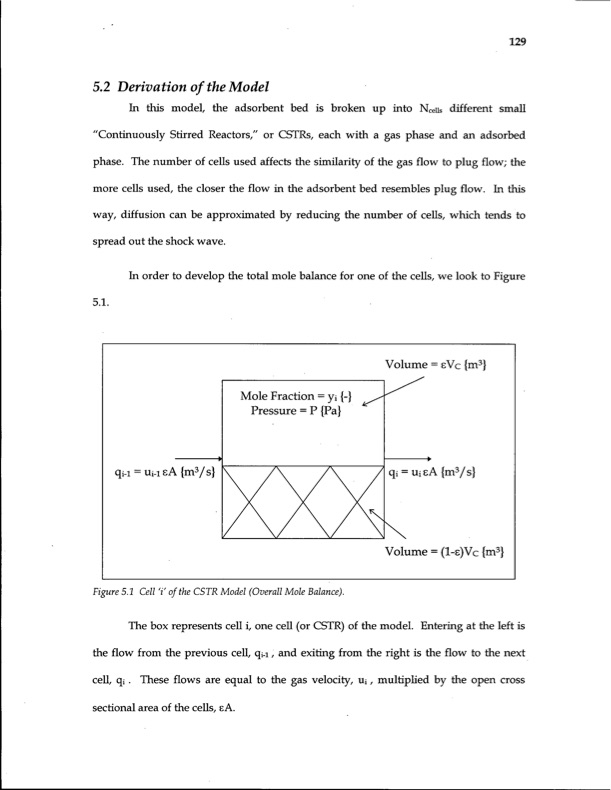
PDF Publication Title:
Text from PDF Page: 145
5.2 Derivation ofthe Model In this model, the adsorbent bed is broken up into N c e u s different small "Continuously Stirred Reactors," or CSTRs, each with a gas phase and an adsorbed phase. The number of cells used affects the similarity of the gas flow to plug flow; the more cells used, the closer the flow in the adsorbent bed resembles plug flow. In this way, diffusion can be approximated by reducing the number of cells, which tends to spread out the shock wave. In order to develop the total mole balance for one of the cells, we look to Figure 5.1. Mole Fraction = yi {-} ^ Pressure = P {Pa} •• qi-i = unsA {m3/s} qi = UJSA {m3/s} Volume = (l-s)Vc {m3} The box represents cell i, one cell (or CSTR) of the model. Entering at the left is the flow from the previous cell, q;.i, and exiting from the right is the flow to the next cell, qi. These flows are equal to the gas velocity, Ui, multiplied by the open cross sectional area of the cells, eA. Figure 5.1 Cell T ofthe CSTRModel (Overall Mole Balance). Volume = sVc{m3} 129PDF Image | Energy Efficiency of Gas Separation Pressure Swing Adsorption

PDF Search Title:
Energy Efficiency of Gas Separation Pressure Swing AdsorptionOriginal File Name Searched:
ubc_1997-0009.pdfDIY PDF Search: Google It | Yahoo | Bing
CO2 Organic Rankine Cycle Experimenter Platform The supercritical CO2 phase change system is both a heat pump and organic rankine cycle which can be used for those purposes and as a supercritical extractor for advanced subcritical and supercritical extraction technology. Uses include producing nanoparticles, precious metal CO2 extraction, lithium battery recycling, and other applications... More Info
Heat Pumps CO2 ORC Heat Pump System Platform More Info
| CONTACT TEL: 608-238-6001 Email: greg@infinityturbine.com | RSS | AMP |